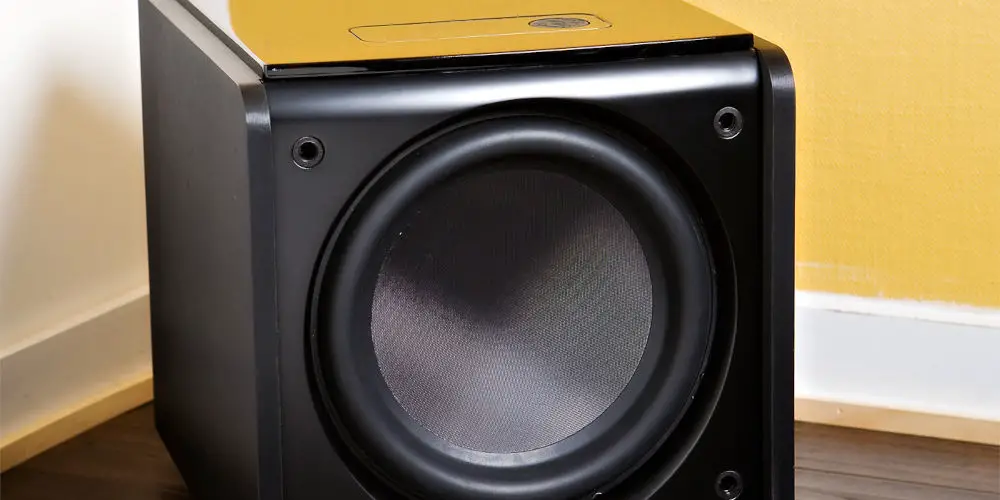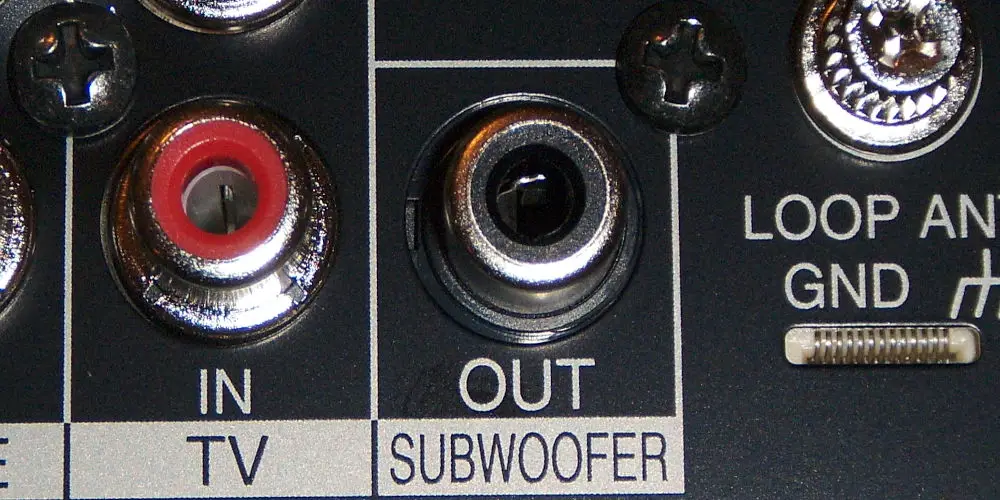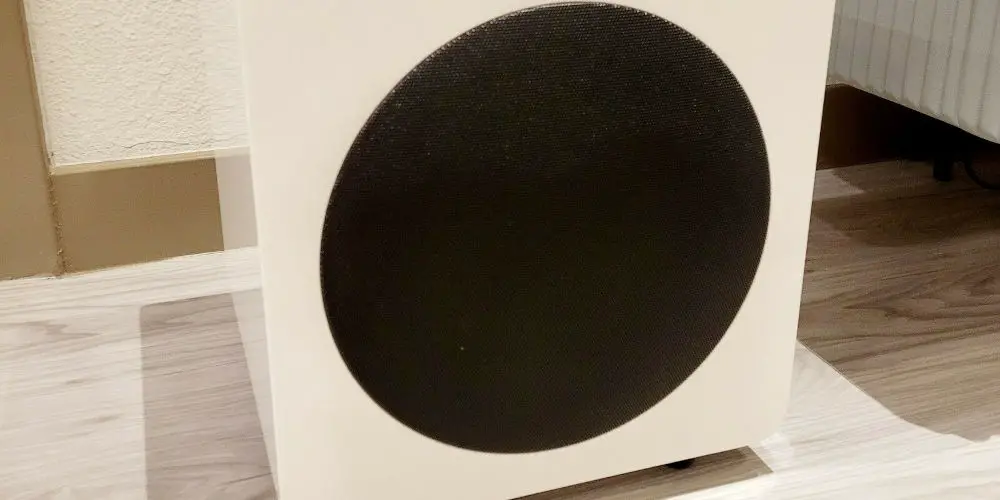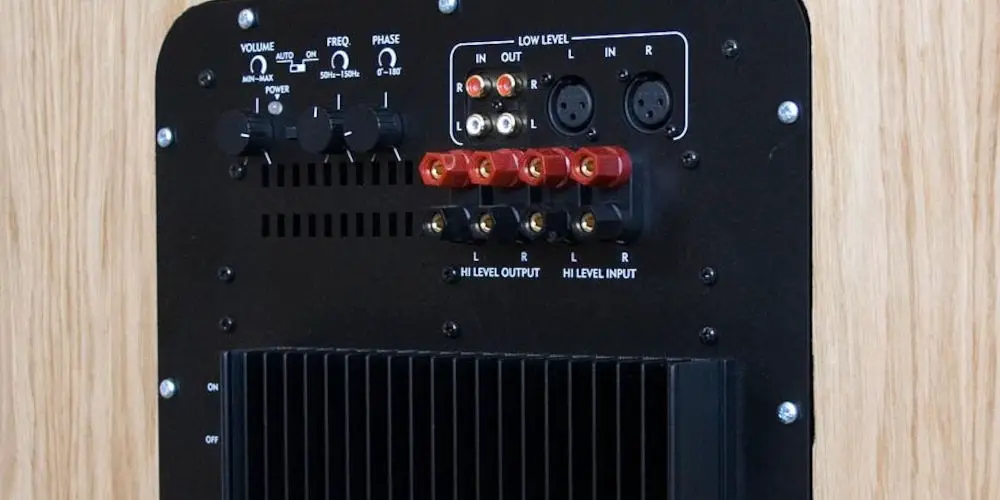Passive vs powered subwoofers: What’s the difference?

Every home cinema room needs a subwoofer as part of the surround sound system. However, the type of subwoofer you have determines how you connect it. Hence, it’s worth knowing the difference between passive vs powered subwoofers.
The subwoofer produces low frequencies. If you listen to music and the bass is missing, it will sound lifeless and flat. In a movie, these low frequencies replicate the rumbling of a train moving down the railroad track, explosions, and the deep rumbling of an earthquake.
When buying a subwoofer, it’s crucial to understand if it’s a passive or powered unit as this dictates how you’ll connect it to your AV receiver and home cinema set up. Why would you choose a passive vs powered subwoofer? Let’s find out!
What is a passive subwoofer?
The majority of speakers you’ll have used will be passive. To produce any sound, they’ll need to be connected to an external amplifier. The simplest example of this is a Hi-Fi.
The central unit with its built-in radio and CD player also has a power amplifier that drives the speakers. If your Hi-Fi didn’t have an amplifier built-in, you’d hear nothing.
The same is true for passive subwoofers. They need to be powered by an external amplifier, like your Hi-Fi speakers.
However, there is one difference. Subwoofers require more power to reproduce low-frequency sounds. So you’ll need an amplifier or receiver that offers enough power output to sustain the low frequencies reproduced by the subwoofer without overloading the amplifier.
The amount of power you require depends on the subwoofer speaker and your room size. With too much power, you might disturb the neighbours or at worst, struggle to balance all of the speakers at a comfortable volume.
As with the other speakers in your home cinema set up, you can use a speaker cable from an amplifier to the passive subwoofer. If your AV receiver only has a passive subwoofer output, you’ll need to buy an external subwoofer amplifier.
You’ll need to connect your AV receiver and subwoofer amplifier using an audio cable, typically a phono to phono cable. Next, using a speaker wire, connect the speaker outputs on the subwoofer amplifier to the speaker terminals on the passive subwoofer.
You typically find passive subwoofers in custom installations where the subwoofer is purpose-built and wall-mounted, just like the other speakers within the room. That said, some inexpensive surround sound systems and some 2.1 channel soundbars incorporate a passive subwoofer.

How is a powered subwoofer different?
A powered subwoofer (often referred to as an active subwoofer), has an amplifier built-in to the enclosure. The speakers and amplifier are matched to ensure the best frequency response and power output. The result is a punchy low-end that completes the sound.
With a powered subwoofer, you only need a single cable from your AV receiver passive subwoofer output and connect it to the corresponding input on a powered subwoofer. There is no need for any additional equipment, pre-amps or amplifiers.
A powered subwoofer places fewer demands on the receiver’s amplifiers, allowing it to power the mid-range and tweeter speakers more effectively. Also, by decreasing the demands on the unit, it should last longer.
Passive vs powered subwoofers: Which is better?
As with any speaker, there are many factors to consider when deciding how good it is. The same is true with subwoofers. Whether you use a passive vs powered subwoofer, you should care about the overall sound and feel produced, not solely the type.
That said, powered subwoofers are the most commonly used of the two types. As they have a built-in amplifier, they can reproduce loud, clear low frequencies without having to compromise due to the limitations of another receiver or amplifier.
Practically speaking, adding a powered subwoofer to a home cinema system is easier as they plug directly into the AV receiver. The majority of AV receivers only offer one or two passive subwoofer outputs that are specifically designed to connect to a powered subwoofer.
Using a passive subwoofer is more expensive as you typically need to buy an external amplifier to power the speaker unit, not to mention the extra cables. For more home cinema rooms, a powered subwoofer is more cost-effective than the passive alternative.
Some passive subwoofers offer in and out standard speaker connections. You can connect the left and right speaker connections on a receiver or amplifier to the passive subwoofer. Next, connect the left and right speaker output connections on the passive subwoofer to your main left and right front speakers.
The subwoofer “strips off” the low frequencies utilizing an internal crossover. It sends the mid-range and high frequencies to the additional speakers connected to the subwoofer’s speaker outputs.
You, therefore, don’t need an extra external amplifier for the passive subwoofer. However, this set up may put more strain on your receiver’s amplifier due to the high demands for low-frequency sound output.

Any exceptions to these rules?
Many powered subwoofers have both line input and speaker connections, allowing them to work with several different types of inputs. You could feed the subwoofer from an amplifier’s speaker connections or amplifier/receiver subwoofer preamp output.
In both cases, the signal goes through the powered subwoofer’s internal amplifier, thus reducing the demands from the receiver.
With an older AV receiver or amplifier that does not have a dedicated subwoofer preamp output connection, you can still use a powered subwoofer with both standard speaker connections and line inputs.
Can I use a wireless connection with my subwoofer?
A frustration of many with a dedicated home cinema room is the pile of cables! The best location for your subwoofer could require additional audio cables, making it unfeasible. However, you can solve this issue if you have a powered subwoofer by using wireless connectivity.
There is one catch, you’ll still need a power socket or two near where you intend to place your subwoofer. There are two ways to make your subwoofer work wirelessly.
Firstly, you could buy a subwoofer that has a built-in wireless receiver and also comes with an external wireless transmitter. The transmitter plugs into the subwoofer line output of an AV receiver or amplifier, thus removing the need for audio cables.
You could instead, purchase a wireless transmitter/receiver kit that connects to any powered subwoofer with a line input and any AV receiver or amplifier with a subwoofer or low-frequency effects (LFE) line output.

Passive vs powered subwoofers: The verdict
Hopefully, you have a clearer idea of the difference between passive vs powered subwoofers. Before purchasing a subwoofer, check what subwoofer output your current equipment has. You want the process to be as easy as possible.
If your AV receiver, for example, has a subwoofer preamp output (usually labelled: Sub Pre-Out, Sub Out, or LFE Out), you should use a powered subwoofer. Otherwise, you’ll have no low end!
You might be in the process of upgrading your AV receiver and already have a subwoofer and other speakers. So, you’ll want to check to see what type of subwoofer it is.
If it only has speaker connections, not a subwoofer line input, it’s a passive subwoofer. So, you’ll need to purchase an additional amplifier to power the subwoofer or upgrade to a powered subwoofer.




